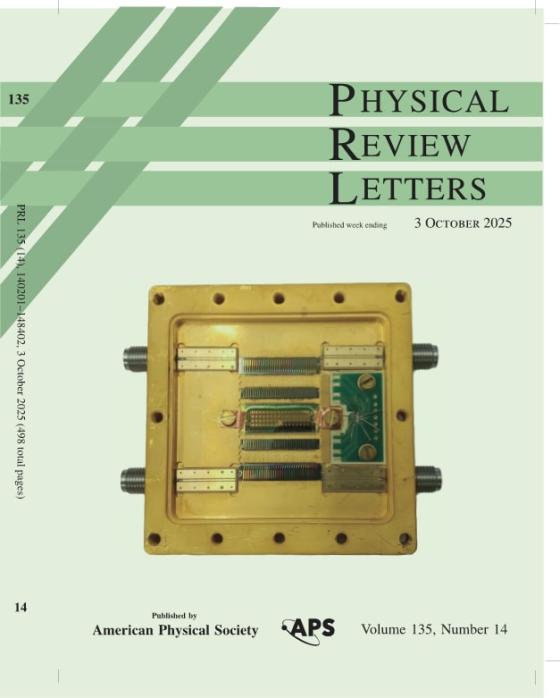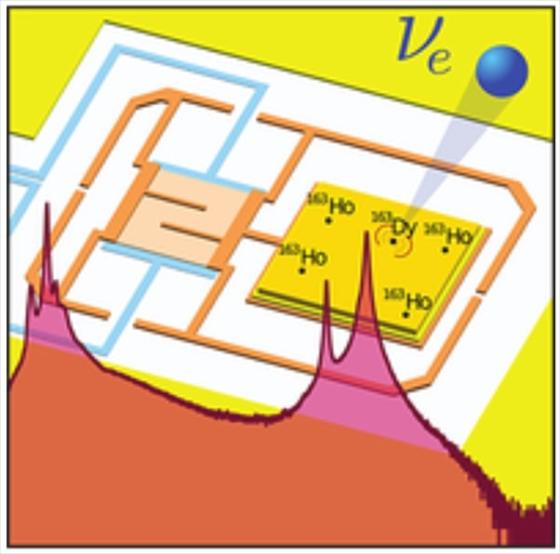The HOLMES experiment demonstrates the validity of an approach that uses calorimetric measurement of the electron capture decay of 163-Ho, placing a stringent upper limit on the mass of the electron neutrino. The work carried out by the Low Temperature Detector Group of the Department of Physics (Dott. L. Ferrari Barusso, Prof. F. Gatti) and INFN (Dott. M. De Gerone) in Genoa, in collaboration with P. Manfrinetti of DCCI, the University and INFN of Milan Bicocca, the NIST and University of Colorado - Boulder group, was published in Physical Review Letters on 3 October 2025.
The journal chose a photograph of the heart of the experiment for its cover: a small copper box measuring a few centimetres on each side containing a chip with 64 cryogenic microcalorimeters with 0.1 K phase transition sensors, implanted with Ho-163 ions in our Department.
The work definitively demonstrates the feasibility of this new experimental methodology for measuring neutrino mass and the scalability of the technology: hundreds of these small boxes with 30x30 matrices, for example, can achieve sensitivities on the mass close to 0.05 eV.
The study of cryogenic detectors and methodologies for producing and inserting Ho-163 into microcalorimeters was initiated by Prof. Flavio Gatti in the mid-1990s and continued in the 2000s, thanks in part to the contributions of young doctoral students and researchers, including Dr Patrizia Meunier (later at Berkeley) and Professor Loredana Gastaldo (now at Heidelberg).
In 2014, the HOLMES proposal, based on these developments, won the ERC call, allowing us to build the experimental apparatus that led to the published result.
The researchers would like to thank A. Bevilacqua, L. Parodi, and F. Siccardi of INFN Genoa for their invaluable contribution to the design and construction of the experimental apparatus, as well as INFN's design and mechanical workshop services.



